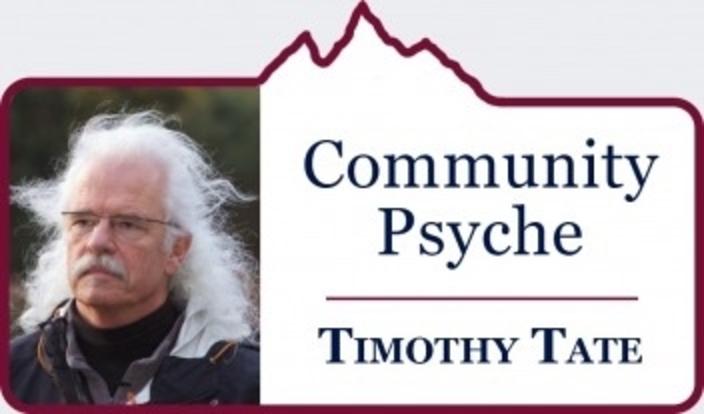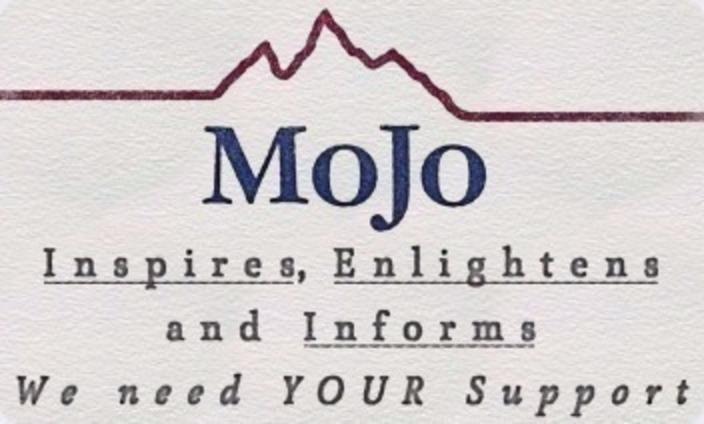Back to StoriesDreams: What Are They Trying To Tell Us?
January 22, 2019
Dreams: What Are They Trying To Tell Us?Flowing forth from the streams of our unconsciousness are insights sometimes more profound and visions more real than what we know when our eyes are open
Imagine an animated invisible world continually broadcasting scenes that are only vivid when the eyes are shut and the brain is on pause.
Consider, too, how that thing we call memory is actually the key to our inner theatre, unlocking what has been actually seen during our nighttime viewing, but that such memory quickly dissolves. Sometimes it even seems to escape faster the more that we try to retain it.
Think of it as kind of like watching an Academy Award-winning adventure drama that leaves us breathless yet forgetting that we even saw it by the time the movie theater exit doors slammed shut behind us. And then it is gone.
Dreams. They can offer clues to understanding what's going on with our inner psyche. They can be revelatory, or haunting. They can leave behind firm impressions, which affect the way we live in our conscious waking hours and they can be evasive.
But the ethereal nature of dreams is different from when memory is surrendered to dementia.
Many spiritual people are convinced that dreams give us contact with the divine; many people in the work I do—psychotherapy—see dreams as presenting an opportunity to have a rare conversation with ourselves. All of this gives them a quality of being sacred.
It’s hard to know how many of us believe in an invisible force that may wear the mantle of a god, spirit, or other divine being, be it of Christian, Islamic, Jewish, Pagan, or other religious cut of cloth. Billions of us bank on some kind of afterlife in a place unseen and swear it is real. Yet invariably when asked about last night’s dream it is dismissed as never having happened. “I don’t remember my dreams," I hear people say, or dreams might be disregarded by us with, “I had such a weird dream last night,” or feared as in, “I had a nightmare that I can’t shake.”
Besides the certainty that all of us experience birth and dying, so too do we dream. How fascinating that some interpret dreams as offering a connection to our soul while others dismiss them as irrelevant. How many other experiences in human life are so powerful, so frequent and yet treated with a sense of disposability? I think dreams present us with opportunity to discover who we are.
° ° °
We know about Papa Freud and his tome, The Interpretation of Dreams, published in 1900 under the title, Die Traumdetung, where he claimed that “...the interpretation of dreams is the royal road to a knowledge of the unconscious activities of the mind.”
These activities were, he said, the spawning ground for neurosises, sexual fantasies, and hysteria, to name a few of the maladies lurking in our so called “unconscious” that interpreting our dreams would effect. Repressed sexual ideation charged up this unknown region of our brain with such high voltage that our dreams must represent such forbidden urges and thoughts symbolically since our fragile egos can not handle direct contact.
Thus began 100 years of mostly white European male psychiatrists interpreting dreams for us commoners. If you can allow yourself to move past the oversimplification of Freud and the associations tied to him about sex, there's a whole inner universe, as grand as the physical one surrounding us, to ponder.
Hundreds of dream books telling us what our dreams mean followed. Freud’s chosen successor, Dr. C.G.Jung diverged from Freud blazing, what I would call, a more soulful trail marking it with archetypes, the collective unconscious, compensation, association/amplification not interpretation, and stressing the creative nature of dreams above their function of expressing taboo or pathological content.
Jung’s chosen successor, Dr. James Hillman, my dear departed friend and mentor, moved the unconscious needle, pointing it towards the Greek's notion of the Underworld where they imagined that nightly we cross over the river Styx into the world of images and come back again
No longer ruled by the rational twin Zeus, Hades welcomes us into his world, one beyond the reach of thought. Dreams are our panoply of imaginal adventures in the underworld. Alice’s adventures in wonderland began when she went down the rabbit hole into the underworld, as did mythological Greek heroes crossover into its haunted regions. It’s no accident that Hades is the alternative word for Hell, in the Christian playbook, so feared with damnation it is.
Some have speculated this may be the reason why some religious faiths or denominations are so reticent about encouraging their faithful to consider psychotherapy.
Hillman is not timid in his redirection, his re-imaging of the dream beyond the terrain laid out by Freud. In his preference to his book, The Dream and the Underworld, he states: “I have come to believe that the entire procedure of dream interpretation is wrong. And I mean “wrong” in all its fullness: harmful, twisted, deceptive, inadequate, mistaken, and exegetically insulting to its material, the dream.”
In other words, our dreams really are telling us something. That statement and the work it introduced shook my conception of reality. And I have witnessed how dream work can help people who are stuck most beyond various kinds of impasses.
I wondered what Hillman meant. Did we in fact “go” somewhere during our sleep, out of our bodies and minds? Or is the underworld allegory just that, a way of comprehending an invisible experience that at once is difficult to recall but while in its sway elicits the physiological symptoms of physically experiencing what the dreamer is seeing. Some of those symptoms, which also exist in the physical world with our reaction to daily events: increased blood flow, sexual responses, squirting adrenaline, arms and legs flailing, contorted sounds spoken, screams shouted, somnambulism. If reality is what I perceive and experience, then dreams make a compelling case for being real.
Indeed, they can be intensely real.
I have made dreams a centerpiece of my psychotherapy practice hearing over 50,000 dreams recounted by patients during my 40 years of practice. This exposure has led me to some assumptions if not conclusions. The short list of these assumptions goes like this:
- Dreams are the way in which the human psyche tells stories.
- Not all dreams are created equal.
- There are four major types of dreams that differ in their content and quality.
- There are both personal and archetypal dreams.
- Dream images are sacrosanct because they uniquely our own.
- Intentionally developing a relationship with the “dreamer” inside ourselves is itself a form of intimacy.
- Creativity is the boon of our Dreamtime.
- If our brief life is an opus then our dreams are its plot and cast of characters.
Our life is not our own; its source comes from a force beyond our thoughts about who we are.
The complex of thoughts that often dictate our perception of “who we are” are cognitive braids woven by the hands of the past. Psyche is soul and as such is beyond the control of our thinking/emotional/physical functions. That’s why dreams are so weird. They neither care nor conform to our convictions, methods of analysis and scientific rules.
That’s why dreams are so weird. They neither care nor conform to our convictions, methods of analysis and scientific rules.
Dreams are the broadcasts from the 95 percent of the inner and outer invisible universe. There are three steps in attaining the richness of the premier vision class of dreams, i.e. exploring what they are saying and really understanding the insight they offer.
So let's go deep for a moment; please hang in there with me. We need to first outline the dream roadmap.
The first level of dream broadcast, the a.m. station of dreams, are those which come in the first cycle of sleep. These dreams have dual functions. They clear and sort our waking neurotic residue, go on and on and offer scenes and snippets that can be valuable images but mostly process the detritus of modern life helping us stay sane, from the Latin, meaning healthy. If you've had a stressful day, or something's bugging you, this is where you begin to unwind and prepare the mind for navigating other passageways.
Secondly, this level of dreams includes repetitive or recurring dreams. These recurring dreams known by the hallmark images of being late for class, unable to run as if stuck, can’t remember a school locker combo, missing a test, and the like, are dreams that reveal our shame complex. Have you had them? Most do. If this content is worked in my practice the lie of inadequacy believed by the dreamer as a fact dissolves and said recurring dream often leaves the dreamer’s psyche.
These recurring dreams known by the hallmark images of being late for class, unable to run as if stuck, can’t remember a school locker combo, missing a test, and the like, are dreams that reveal our shame complex.
The next level of dreams is the four-part dream recognized by the dramatic scene changes, such as the sensation “suddenly I was somewhere completely different.” These dreams have parts that taken as a whole address and characterize our Personas, or the social roles and identity we project of ourselves into the world. Scene 1 expresses the theme under consideration that is an element of the Persona’s structure. The second part of these four part dreams is the key element or character that affects the theme’s development that wishes to be known. The third part of these dreams is the drama or dynamic that must be faced if there is to be movement toward wholeness or character. The final scene is the task that must be faced in the waking world. These dreams often occur in the middle of the night. They involve a progression.
A third form of dreams are those we cannot forget be they visions or nightmares. They are luminous, short and quixotic. The most recent example of such a dream in my life was the dreamer’s voice declaring “shuval.”
Among the various Hebrew names and derivations the one that caught my attention was its meaning of “dispossessed.” It is also close to the word shovel which is another way of clearing out unwanted material. The personal meaning of dispossessed for me is one of liberation from being possessed by false ideas or emotions. These “gold” dreams such as Martin Luther King’s iconic “I have a dream” or the dreams of Daniel in the Old Testament speak to or predict universal or archetypal themes.
Conversely, nightmares herald unintegrated or banished content that without being faced grow in their broadcast intensity yielding either insomnia or sleep paralysis. It’s like visions and nightmares share the same frequency either enlightening or terrifying depending upon the context and character of the dreamer’s life.
Often parents worry about the onset of nightmares in their four- or five-year-old children. The Swiss psychologist and pedagogist, Jean Piaget, helped us understand the impact of a child’s cognitive functions and how developing from one stage of comprehension to another level of understanding can rock a child’s mind into nightmares. If this concept is grasped it helps us appreciate that this mental/soulful evolution continues throughout life and that our nightmares are explicit warnings as to where we are stuck.
This takes me to what I now consider the most valuable resource our dreams provide: nightly encounters with images. “...for the Greeks, soul was an image" was Hillman quoting Martin Nilsson in Hillman’s must read book, The Dream and the Underworld. If we can appreciate this relationship between image as soul, then our imagination is where we play, encounter, and habituate to how our soul looks, acts, and represents.
So it is not mandatory that one re-member her full dream as it is to wonder about and reflect on the “snippets” or scenes of images we do recall. Advanced dreamers often have total recall of a dream’s full scenario and what a gift this is but often we are left with but a lingering image and this is plenty.
Hillman continues:“Because the dream speaks in images, or even is images—which is what the Homeric oneiros meant (i.e. visions!)—because dreaming is imagining, our instrument for undistorted listening can only be the imagination, Dreams call from the imagination to the imagination and can be answered only by the imagination.”
What this leaves us with is a reframing of what images and their collective force, our imagination is. I wrestled for years on printing "Archetypal Psychotherapist" on my appointment cards. Who knows what this means but what called to me was that it might begin the wondering.
Since it is my belief that we can not use our thinking function alone to find our way out of trouble but must also welcome our imagination to the discussion, then respecting and crafting our imagination begins with the nightly wellspring of images surging through our dreams beckoning us to dive into the depths of our psyche, our soul.
Mind you, I am presenting an approach that incorporates both logos (rational) and psyche (soul) or psychology, not as defined by state statute or The Diagnostic and Statistical Manual of Mental Disorders, but by the experiential marriage of image and intellect in pursuit of an inspired, creative life.
This is how you begin or reignite your relationship with dreams. You can do this, or you can leave your dreams alone, unexamined, like random visitations of visions in the night. Many of us will spend a third of our lives with our eyes closed and amid dream encounters.
Like any intimate relationship dreamwork must be an intentional priority. I look forward to dreams; most people who do dreamwork also treasure that that dreamtime inhabits that span between the end of one day and the beginning of a new one. Ponder the symbolism of that.
Each night I prepare for my night sea journey by readying my dreaming launch pad—my bed—before I actually go to bed. Once in bed I offer a conscious invocation to the dreamer, asking for an encounter. (As an elder I need to pee several times a night and it is then that I re-view what I saw).
But those of us unbothered by such nocturnal interruptions might awaken during the night and if so, pen and pad at the ready, simply jot down a word describing an image without trying to write down the entire dream. I have trained my mind to remember images so no longer write them down in the middle of the night but that is an important first step for developing an intimate relationship. Don’t we write to those we love?
Yes, dreamwork means caring for yourself, and you deserve it.
Dream images are the bountiful gift from the invisible world that come to us every night. Tell your dream images to those you trust as a way of enhancing intimacy rather than trying to interpret.
After all, the depth of who we are needs attending to as much as our physical, financial, or social security. The more we relate to our dreams the less we fear death, cultivating a relationship throughout our life with its domain: the invisible universe. Imagine it this way, as my dear Irish author and mystic friend John Moriarty (see his book Dreamtime) helped me see: poetry, storytelling, myths, fables, and dreams are ways of accessing our adventure with immortality.
PLEASE SUPPORT US: Mountain Journal is committed to giving you free reads you won't get anywhere else, stories that take time to produce. In turn, we rely on your generosity and can't survive without you! Please click here to support a publication devoted to protecting the wild country and the wildlife you love.






